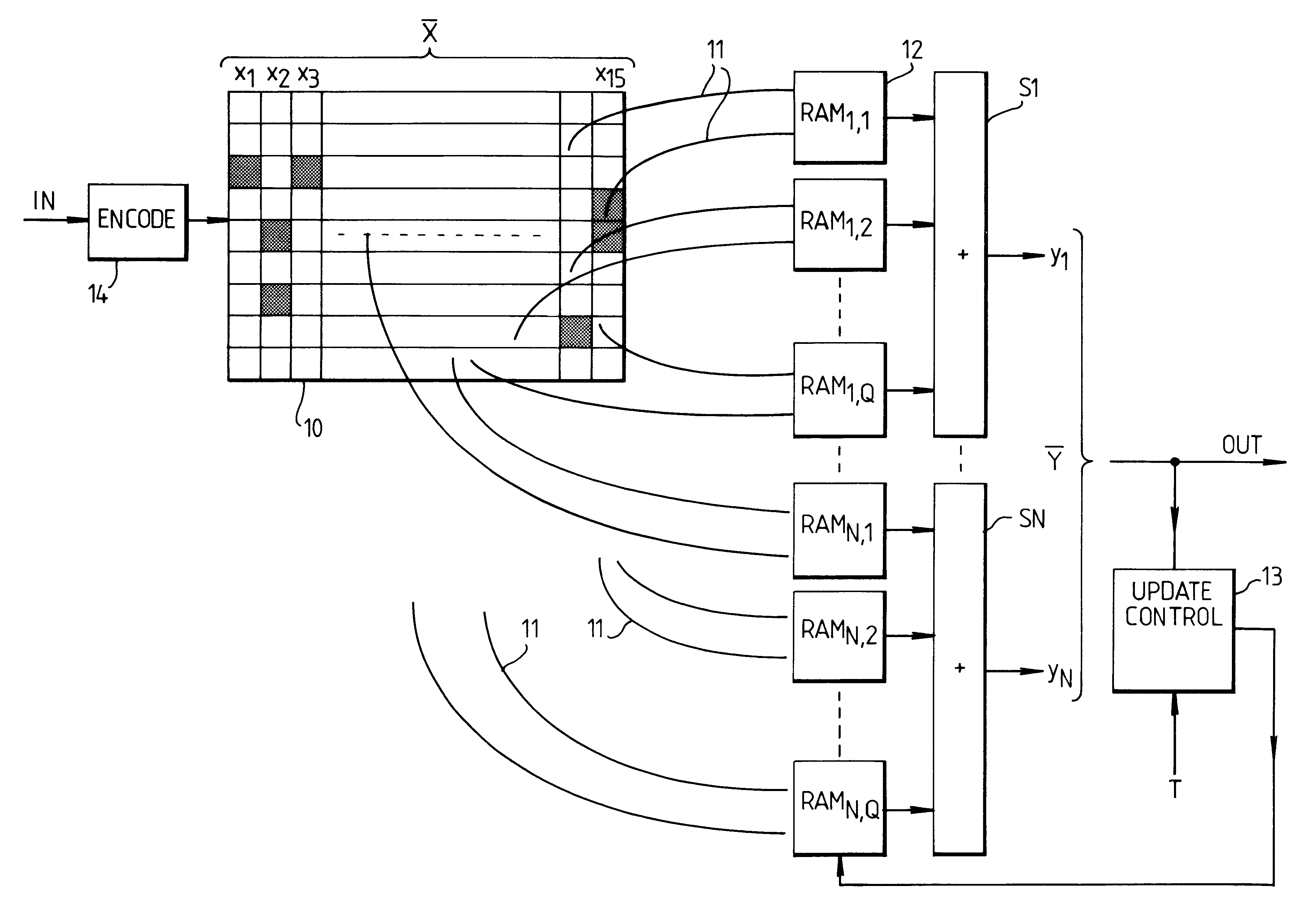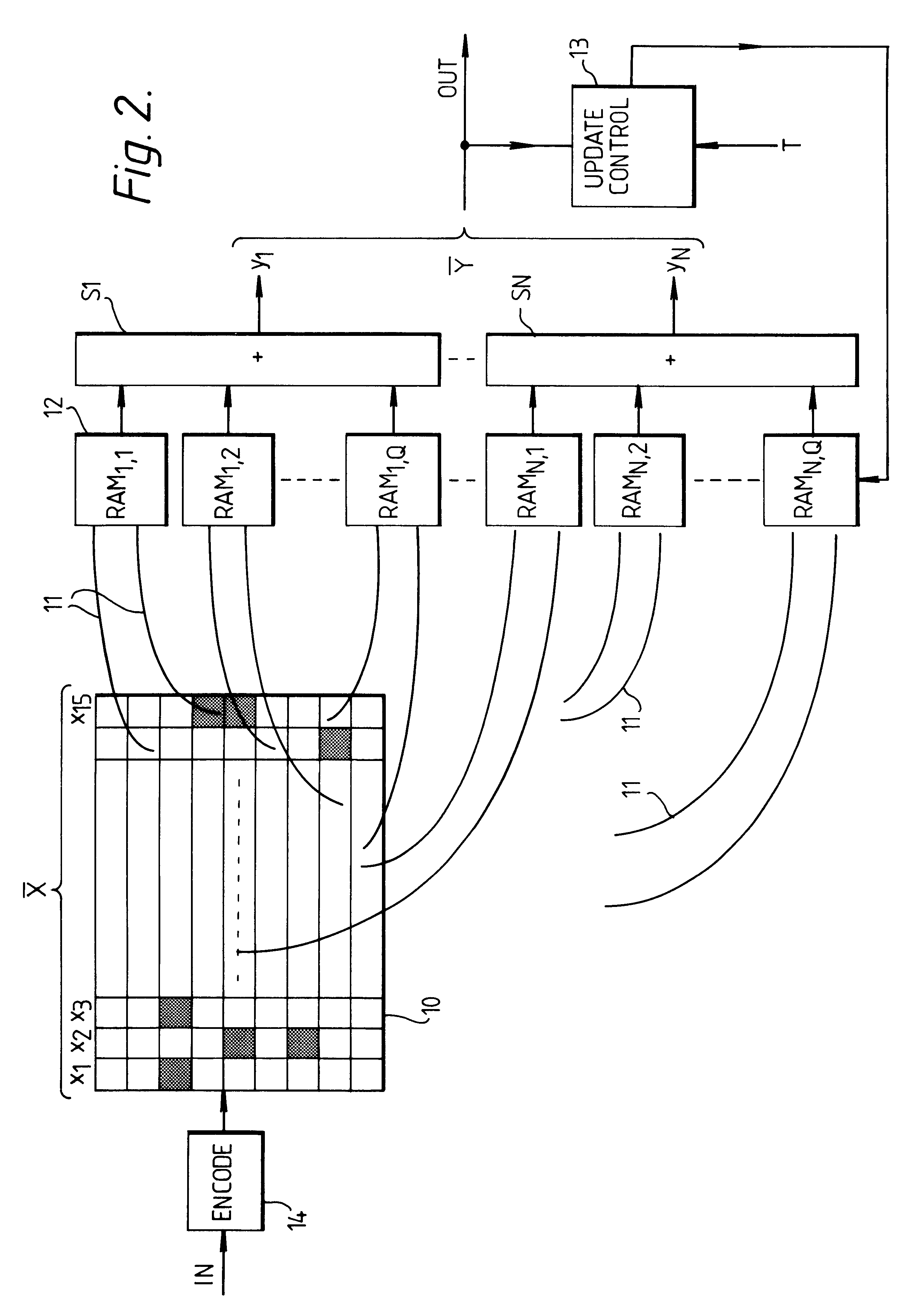Pattern recognition
a pattern recognition and pattern technology, applied in the field of pattern recognition devices, can solve the problems of difficult application of multi-layer perceptions to real problems such as speech recognition, performance non-, and inability to learn such seemingly simple functions as exclusive-or functions
- Summary
- Abstract
- Description
- Claims
- Application Information
AI Technical Summary
Problems solved by technology
Method used
Image
Examples
Embodiment Construction
Referring to FIG. 2 there is shown a pattern recognition device having an input for receiving a time-varying signal in the form of digital samples. These are divided into frames of (for example) sixteen samples x.sub.1 . . . x.sub.15 (or, in vector notation, X) and stored in a store 10. To avoid confusion, it may be stated that a frame may be regarded as a sixteen element vector (viz. a one-dimensional array or pattern of samples) representing a point in a notional 16-dimensional input space.
Note that the case of a one-dimensional array is by way of example; multi-dimensional arrays (e.g. for image recognition) are equally possible.
Although, in the example, the input is a one-dimensional array, it is convenient to view the store 10 as two-dimensional since it must accommodate a number of bits for each sample. N-tuple connection lines 11 are, as in FIG. 2, connected to the store to form address lines for several banks 12 of memories. The connections are distributed over the bits of t...
PUM
 Login to View More
Login to View More Abstract
Description
Claims
Application Information
 Login to View More
Login to View More - R&D
- Intellectual Property
- Life Sciences
- Materials
- Tech Scout
- Unparalleled Data Quality
- Higher Quality Content
- 60% Fewer Hallucinations
Browse by: Latest US Patents, China's latest patents, Technical Efficacy Thesaurus, Application Domain, Technology Topic, Popular Technical Reports.
© 2025 PatSnap. All rights reserved.Legal|Privacy policy|Modern Slavery Act Transparency Statement|Sitemap|About US| Contact US: help@patsnap.com



